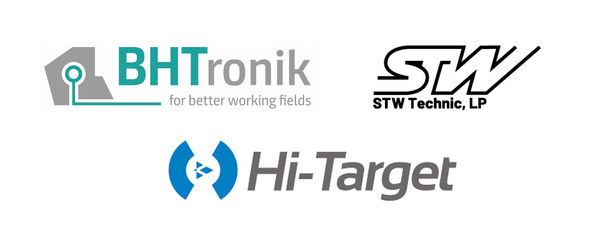New AEF Guidelines
The AEF Guideline AEF 023, AEF 040, AEF 043.
AEF 023
The AEF Guideline AEF 023 ISOBUS Automation Principles describes the processes for ISOBUS Automation based on TIM and released as RIG 3 with the major update of adding Diagnostic Trouble Codes (DTCs) to the existing error codes.
Additionally, some clarifications were made to topics, where questions on AEF 023 RIG 2 from the industry and TIM community got collected meanwhile. Very important for all active and new TIM members is the clarification about staying backwards compatible in future, when e.g. TIM v2 is adding new Functionality. As the TIM certificates are signed by AEF, their content can’t be adjusted based on the determined TIM connection version (it is intended that this content can’t be adjusted).
However, during parsing the pseudonym of the counterpart TIM certificate, please consider the following:
- Treat the received pseudonym as variable length;
- Ignore the certificate version for manufacturer series certificate;
- Ignore TIM function ID values which are not expected according to the TIM connection version;
- Ignore number of facility bytes associated with a TIM function which exceed expected number of bytes for that TIM function according to TIM connection version.
AEF 040
The AEF Guideline AEF 040 ISOBUS – ISOBUS Security Principles is meant to provide a design and application guideline and measures for all manufactures of agricultural machinery when implementing security on mobile electronics (e.g. ISOBUS).
The guideline is also meant to secure the AEF business model according to a common security standard and preventive measures:
- Secure AEF intellectual property and customer data;
- Prevent unauthorized access and sabotage;
- Prevent espionage and fraudulent attacks;
- Fend of manipulation or loss of data;
- Prevent loss of system availability;
- Prevent damage to AEF (and manufacturer) image.
AEF 043
High Speed ISOBUS (HSI) is being developed as the next generation of Agricultural communications network. HSI will enable greatly enhanced command and control performance for larger and more complex equipment, as well as supporting the integration of cameras for remotely viewing the process and surroundings. Even better, development of HSI is being supported by non-Agricultural industry partners that also need a new high-performance network. These partners are bringing their engineering expertise to the table to ensure HSI is a robust and reliable system.
Recently released as an international guideline, AEF 043 is the third guideline supporting the High Speed ISOBUS project.
This guideline focuses on the system architecture, which defines how HSI technology is applied to a tractor and implement(s). In a manner similar to the architecture of the traditional CAN-based ISOBUS, power is introduced to the network in the tractor, and is provided, along with the network communication, into the cabin, to the rear of the tractor, and optionally to the front.
HSI on an implement can “pass through” if the implement is of a tow-between style.
Unique to HSI is the optional on-implement expansion port. And for convenience, all interfaces to HSI use the same style of connector, so there is no need for a harness adapter kit, as was common with the traditional ISOBUS (which had 3 different standard connectors depending on where on the machine and how it was used). With the expansion port, both in-cab and optionally on-implement, we foresee aftermarket kits that integrate additional devices (such as sensors or cameras). Kits can also support devices with different physical layers (typical of many digital cameras), further expanding the range of products that support the customers’ needs.
AEF 043 defines the electrical characteristics of the integrated single pair Ethernet, to ensure a reliable experience, even as it supports capabilities far beyond the traditional ISOBUS.
With this guideline it is possible to understand the requirements at the physical layer – cable length requirements, power requirements, and data channel wiring requirements. By building upon these definitions, it is possible to implement command and control performance far beyond what the traditional ISOBUS can support. HSI opens the path to ever increasing levels of automation on the path toward autonomous systems. Further, based on the requirements of HSI, the easy integration of camera systems is now possible in a way not previously imagined. These cameras, whether for remote process viewing or situational awareness, can be integrated onto the tractor and just as easily onto the implement(s).
With the full understanding that the CAN-based ISOBUS will continue to support many agronomic systems, HSI is designed to integrate with ISOBUS. While it is possible that far into the future the existing ISOBUS fades away, rest assured, HSI technology complements ISOBUS to offer a comfortable transition plan.
AEF 043; Architecture, complements AEF 041; Physical Layer - Communication channel and breakaway connectors, and AEF 042; Physical layer - PHY and MDI. As the portfolio of HSI Guidelines continue to be developed, and even as the guidelines make their way into the ISO Standard process, HSI is being prepared to appear on tractors and implements in a way that can further improve the efficiency of farming operations.
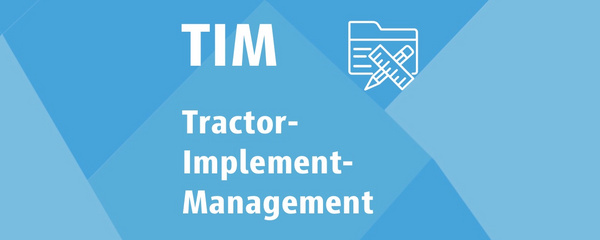
New AEF Guideline TIM Generation 2 released
AEF Guideline “AEF 023 ISOBUS Automation Principles” is updated and now available as RIG 4 (Released International Guideline). Since the original TIM…

Digital Camera Testing during Fall Plugfest in Bologna
During this year’s AEF Fall Plugfest 2024 in Bologna the Digital Camera System (DCS) team took the chance to test cameras and monitors from AEF member…

Updated AEF 005 Guideline
The AEF Guideline “AEF 005 ISOBUS Alignment of ISOBUS systems with ISO 25119” has been released as RIG 3.

AEF Spring Plugfest in Milwaukee successfully finished
From April 1 – 3, 2025 the AEF North American Plugfest was held in Milwaukee, Wisconsin in conjunction with the Association of Equipment Manufacturers…

Successful second AEF Information Day in Livermore, California, USA
The second AEF Information Day has come to a close. This year, the AEF organised it in Livermore, California, USA, on 27 March 2025, with great…

AgIN presented at the GIL conference in Wieselburg, Austria
The AEF presented the Agricultural Interoperability Network (AgIN) at this year's GIL conference at the HBLFA Francisco Josephinum in Wieselburg,…

High-Speed ISOBUS at AETC in Louisville, KY
At this year's Agricultural Equipment Technology Conference (AETC) in Louisville, Kentucky, the AEF presented High Speed ISOBUS (HSI) to a wider…

Review AEF TechWeek in Munich, Germany
AEF Tech Week, held from January 21 to 23, 2025, at Panasonic in Munich, was a significant event, fostering collaboration and innovation within the…

Review Grüne Woche in Berlin, Germany
For the third time, AEF has participated in the “Grüne Woche” fair in Berlin, Germany, from January 17-26, 2025.

AEF presented at AED Summit 2025
On January 15, 2025, Austin Gellings, AEMs Senior Director of Ag and General Manager Norbert Schlingmann introduced AEF at the Associated Equipment…

New LandingPage with information about the AgIN Project
In an era where data interoperability is crucial for agricultural success, the AEF Agricultural Interoperability Network (AgIN) is poised to make a…
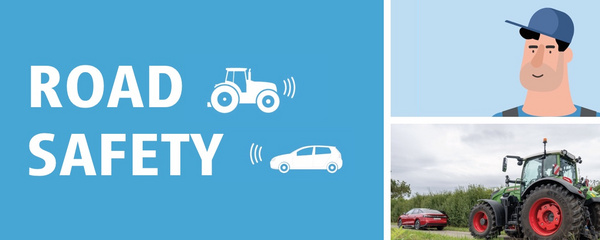
New Road Safety video is online
The Wireless Infield Communication (WIC) and Communications & Marketing (CM) Teams have worked on a new video explaining Road Safety and the…

Start of the subsidized research project FieldDataSync
The AEF is excited to announce the launch of the FieldDataSync research project, funded by the German government. This pioneering initiative aims to…
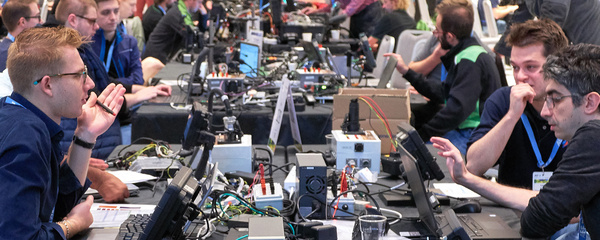
Registration AEF Spring Plugfest, Milwaukee, Wisconsin, USA
We are pleased to announce the registration for the upcoming AEF Spring Plugfest is open. It will take place from March 31 to April 3, 2025 in…

Registration AEF Machine Plugfest, Warendorf, Germany
Registration for the AEF Machine Plugfest is now open! As a first step, we ask you to register your clients. Servers can be registered at a later date…

Franziska Bucher joined the AEF as Project Coordinator Connectivity in January 2025
In January 2025, Franziska Bucher joined the AEF as Project Coordinator Connectivity. Her role is to support the AgIN Team and coordinate AEF´s…

New Team lead and deputies for Tractor-Implement-Management (TIM)
At the end of 2024, Derek Smith (AGCO) stepped down as the Team Lead for TIM. A special thank you for him for leading the TIM team over the last 18…

New AEF Guideline TIM Generation 2 released
AEF Guideline “AEF 023 ISOBUS Automation Principles” is updated and now available as RIG 4 (Released International Guideline). Since the original TIM…

Upcoming events 2025
AEF Spring Plugfest, AEF Machine Plugfest, AEF Fall Plugfest, VDI conference LAND.TECHNIK AgEng 2025, Agritechnica ...

AEF Machine Plugfest planned for TIM and WIC
The AEF is organizing a Machine Plugfest at DEULA in Warendorf, Germany. From June 10 to 13, 2025. The registration for the AEF Machine Plugfest is…

AEF Steering Committee and Team Leaders met in Frankfurt at VDMA
The AEF Steering Committee, as well as AEF Team Leaders and Deputies met at VDMA in Frankfurt beginning of December for three days. On the first day,…
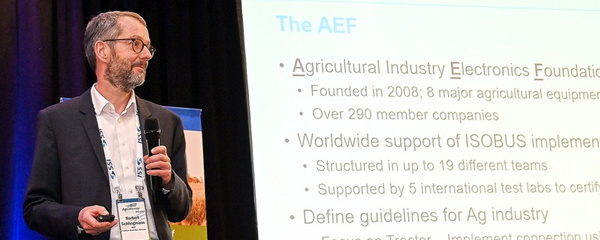
AgGateway Annual conference: November 11 – 13, 2024 in Austin, Texas
General Manager Norbert Schlingmann was a speaker at the AgGateway Annual meeting in Austin, Tx, USA on Nov 12, 2024. The presentation included…
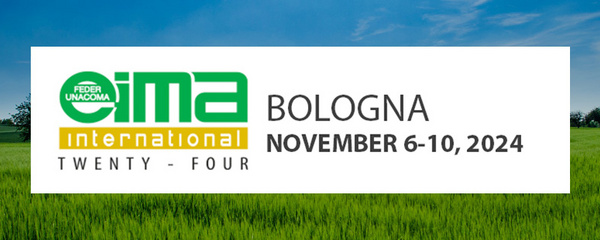
Successful AEF presence at EIMA in Bologna, Italy
AEF is delighted to share the highlights of the participation in EIMA International 2024, from November 6 - 10. This trade show saw an exceptional…

Review FIRA USA Conference: October 22 – 24, 2024 in Woodland, California
From October 22 – 24, 2024, the FIRA USA event took place at the Yolo County Fairgrounds in Woodland California. The three-day event pulled together…
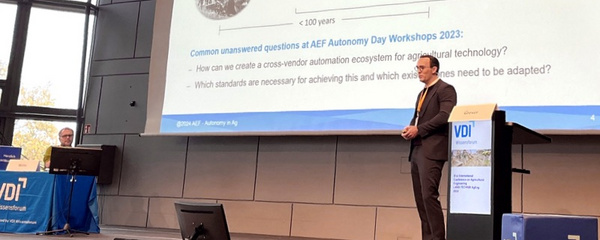
AEF Topics at the VDI LAND.TECHNIK Conference: November 6 – 7, 2024 in Osnabrück, Germany
This year, the VDI International Conference on Agricultural Engineering LAND.TECHNIK, one of the most renowned events for the community of…

The AEF Tech Week 2025 at Panasonic in Munich
The registration for the upcoming TechWeek is still open. Please take a few minutes to register. Register before 11 January 11, 2025 and pay 250 EUR,…

Announcement AEF Spring Plugfest in Milwaukee, Wisconsin, US
We are pleased to announce the next AEF Spring Plugfest. It will take place from March 31 to April 3, 2025 in Milwaukee, the largest city in the state…

Upcoming events 2025
Grüne Woche, AEF Tech Week, AEF Spring Plugfest, AEF Machine Plugfest, AEF Fall Plugfest
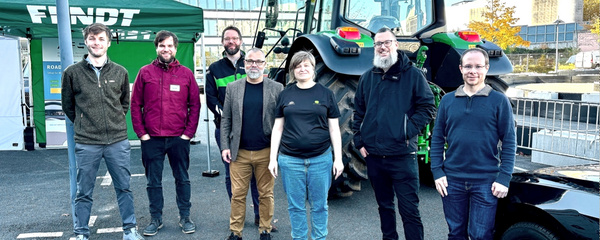
Car2Car Forum in Frankfurt
The Car2Car Communication Consortium organised the annual forum at the House of Logistics and Mobility (HOLM) in Frankfurt am Main, Germany on October…
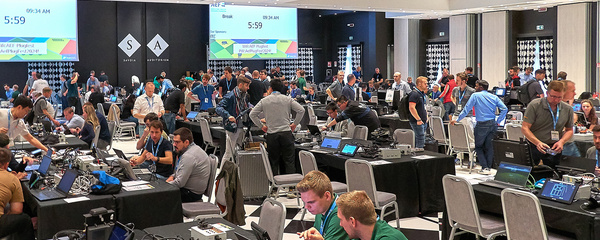
Review Plugfest
The AEF European Plugfest 2024 took place from September 16 to 20 at the Savoia Regency Hotel in Bologna, marking the fourth time this successful…
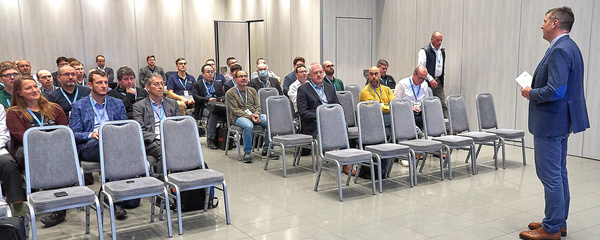
AEF Chair Group re-elected during General Assembly in Bologna
At its recent General Assembly meeting in Bologna, Italy, the Agricultural Industry Electronics Foundation (AEF) re-elected Andrew Olliver, Digital…
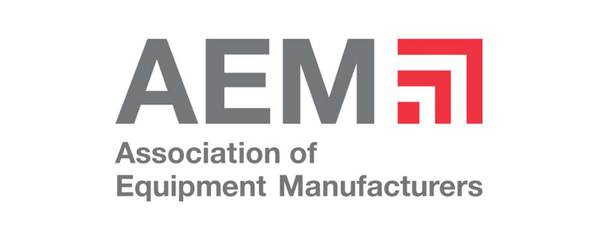
News from AEM: Interoperability in Action to Improve Farming Operations Worldwide
The Agriculture Industry Electronics Foundation (AEF)’s largest-ever Plugfest was buzzing with excitement as new connections and combinations were…

High Speed ISOBUS (HSI) Discovery Station
At the AEF Fall PlugFest 2024, the HSI Team hosted its 6th “Discovery Station” event – so named because the team is researching and experimenting (aka…

Digital Camera Testing during Fall Plugfest in Bologna
During this year’s AEF Fall Plugfest 2024 in Bologna the Digital Camera System (DCS) team took the chance to test cameras and monitors from AEF member…
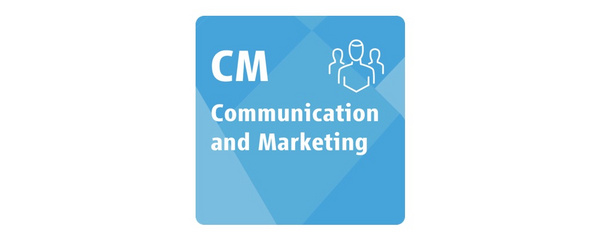
Review AEF Communication and Marketing (CM) summer activities in North America
The AEF CM Team recently had the opportunity to speak at two conferences in the US. AgIN and TIM were presented to demonstrate how AEF is dedicated to…

Exciting Changes Ahead: The New Online SUT Editor is available
At the AEF Fall Plugfest 2024, an important announcement was made regarding the transition to the new Online SUT Editor. This new editor will…
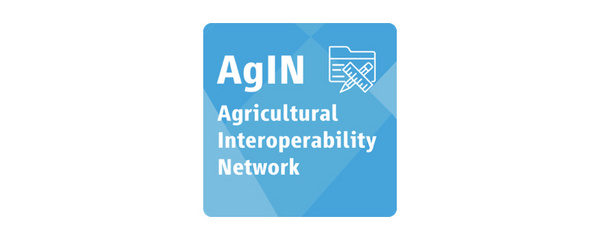
AgIN at AEF Plugfest: Networking in a great community!
The AgIN (Agricultural Interoperability Network) team met at this year’s AEF Fall Plugfest in Bologna.

The Latest from Autonomy in Ag
Considering the rapid development of autonomous technology, the Autonomy in Ag (AUT) project is becoming a central force within the AEF in addressing…

AEF at EIMA 2024
We are excited to announce that the AEF will be present at the EIMA trade fair in Bologna, Italy, from 6-10 November 2024. Visit us at Hall 37, Stand…

AUX-O to be removed from AEF Conformance Tests
The AEF will be discontinuing support for the AUX-O ISOBUS functionality. For several years there have been two different conformance tests for…
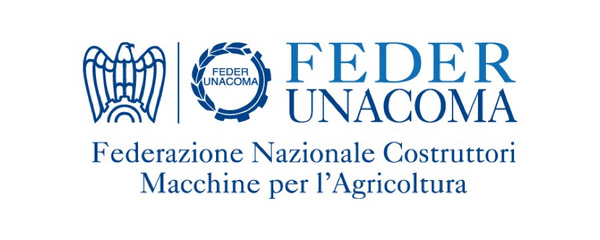
AEF toward the future – Webinar organized by Federunacoma
The webinar “AEF toward the future” was organized by FederUnacoma and held in the morning of July 1st with the purpose to introduce the new AEF…

AEF and ISO met together in Tokyo
In June 2024, the AEF and ISO TC23 SC19 organized a full week of meetings in conjunction with the Japanese Agricultural Machinery Manufacturers…

Review of successful AEF Information Day in Tokyo
The AEF kicked off the Information Day in Tokyo, Japan with great support from JAMMA on the local organization!

Autonomy in Ag – Planting seeds towards an interoperable, autonomous future
The overall goal of AEFs project “Autonomy in Ag” is to face the current challenges of autonomous machines with standards and technologies for…
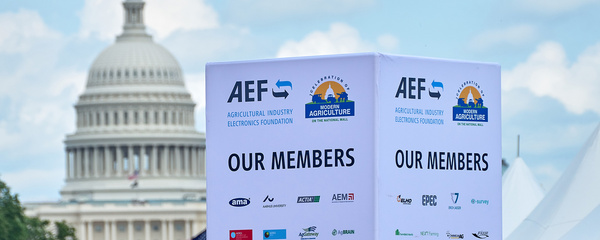
AEF participated in the Celebration of Modern Agriculture on the National Mall in Washington DC
On May 6th-8th 2024 the AEF was invited to participate in the Celebration of Modern Agriculture on the National Mall in Washington DC.

AEF 2024 Fall Plugfest in Bologna, Italy
The next European Plugfest will take place from September 16 to 20, 2024 in Bologna, Italy at the Savoia Hotel. This will be the fourth time at this…
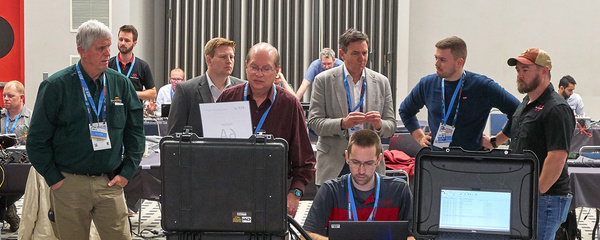
Upcoming events 2024
AEF Fall Plugfest, VDI International Conference on Agricultural Engineering LAND.TECHNIK, EIMA

AEF starts new project called Autonomy in Ag (AUT)
The AEF Steering Committee approved the project charter and the wish to start engagement in autonomy. The goal of the new “Autonomy in Ag” (AUT)…

AEF Steering Committee and Team Leaders met in St. Valentin, Austria at CNH plant
The AEF Steering Committee, as well as AEF Team Leaders and Deputies met at CNH in St. Valentin, Austria for three days.

Announcement Ag on the mall
The Future of Food & Farming
The Agricultural Industry Electronics Foundation (AEF) will exhibit at the "Celebration of Modern Agriculture on the…

High-Speed ISOBUS (HSI) meeting during Plugfest week
The week from February 26 to March 1, 2024 was for the HSI experts packed with meetings in a room far from the exhibit floor, first with ISO meetings…

AEF Project INFO – What’s that?
The INFO project is driven by three main use cases: What are the capabilities of my machine? What is the right product (e.g. a baler) for the…

DCS Team: Welcome Dennis Schäfer, new Deputy Team Lead
Three month after the Kick-off meeting, the AEF is pleased to announce that the DCS Team has a deputy: Dennis Schäfer.

Updated AEF 005 Guideline
The AEF Guideline “AEF 005 ISOBUS Alignment of ISOBUS systems with ISO 25119” has been released as RIG 3.

Upcoming events 2024
Ag on the Mall, ASABE AIM, AEF Fall Plugfest, VDI International Conference on Agricultural Engineering LAND.TECHNIK, EIMA, ...

Review from the AEF 2024 Spring Plugfest in Houston, TX
From February 27 – March 1, 2024 the AEF North American Plugfest was held in Houston Texas.

Invitation for AEF Information Day in Tokyo at JAMMA - Monday, June 17, 2024 in Tokyo, Japan
The Agricultural Industry Electronics Foundation (AEF), a global non-profit organization founded to improve cross-manufacturer compatibility in…

AEF wins AE50 award for Agricultural Interoperability Network
The Agricultural Industry Electronics Foundation (AEF), was recognized by the American Society of Agricultural and Biological Engineers (ASABE) with a…

AEF sponsored ASABE AETC conference
On February 12-14 the AEF was a sponsor of the Agricultural Equipment Technology Conference (AETC) 2024.

AEF participates in the International Agricultural Autonomy Symposium
On Thursday 08 February 2024, the first International Agricultural Autonomy Symposium took place as part of the schedule of events at the World FIRA…

AgIN met in Kaiserslautern, on January 24-25, 2024
The Agricultural Interoperability Network (AgIN) project team made its debut in 2024, rapidly resuming work after winter break without significant…

Green Week in Berlin 2024
Panel discussion about agricultural dataspaces and Artificial Intelligence during the Green Week in Berlin on January 25, 2024.

AEF participating WORLD FIRA 2024
The leading international event for agricultural robotics and autonomous solutions will open its eighth edition from 6 to 8 February at the…

AEF Tech Talks in February and March
The AEF started scheduling a new educational series called Tech Talks on a monthly basis in 2020. AEF Tech Talks are short, condensed introductions to…

Registration for Spring Plugfest in Houston will be open December 15, 2024
Houston, a major city in Texas will be the destination of the next AEF Plugfest again in conjunction with Commodity Classicom. Setting up the George…

Review: Autonomy Day
Autonomy in Agriculture – where does the AEF fit? This was the title for the second AEF Autonomy Day which was held on November 29 at the FederUnacoma…

Trade show review: Agritechnica
AGRITECHNICA - The world's leading trade fair for agricultural machinery took place from November 12 to 18 at the Hannover Messe showgrounds. AEF was…

Review: Presentations at Agritechnica
Wireless infield Communication – Road Safety
Wireless in-field communication (WIC) serves as a crucial facilitator for seamless and interoperable…

10 years of Conformance Test
AEF celebrates 10th anniversary of ISOBUS Conformance Test and Database
With the AEF ISOBUS Database, AEF has been ensuring transparency of ISOBUS…

New AEF Project team: Digital Camera Systems
A few weeks ago, the AEF kicked off the new project team Digital Camera Systems or DCS for short. More than 25 participants from various AEF member…

AEF ISOBUS Certified label
One of the first tasks after the founding of the AEF was to make ISOBUS (ISO 11783) easier to understand for the whole industry. This led to the…

Web based trainings
AEF member companies enjoy complimentary access to our web-based training courses. These instructional videos cover technical fundamentals across…

Upcoming events 2024
Green Week, ASABE Agricultural Equipment Technology Conference (AETC), AEF Plugfests ...

AEF offering reduced membership fee to new members
The leadership at AEF decided after 2021 to offer a reduction of the AEF membership fee to interested companies that may be considering involvement in…

AEF starts AgIN as Data Space Initiative
What is "AgIN"? The Agricultural Interoperabilty Network [AgIN] is a dataspace that provides a framework to foster collaboration between agricultural…

Trade show preview: Agritechnica
AEF Booth at Agritechnica
As in previous years, the AEF will also be present with a booth at Agritechnica in Hannover (Germany) this year.…

Presentations at the VDI conference AgEng
The LAND.TECHNIK International Conference on Agricultural Engineering is the official opening event of AGRITECHNICA. During the two day conference…

Nominated for the DLG Agrifuture Concept Winner 2023
The Agricultural Interoperability Network (AgIN) has been selected on the shortlist for the DLG-Agrifuture Concept Winner 2023, for pioneering…

Nominated for the Systems & Components Trophy 2023
AEF’s “Enhanced Road safety for agricultural vehicles" is a nominee of the a SYSTEMS & COMPONENTS TROPHY – Engineers‘ Choice 2023.

CEMA summit
The AEF participated in the Innovation Village which showed high-tech innovative agricultural equipment during a summit organized by the European Ag…

Review: AEF Fall Plugfest – Antibes
From the September 18 – 22, 2023 the AEF European Plugfest took place in Antibes, France at the Juan-les-Pins Conference Centre.

Review JWG 16 at IVT Expo, Chicago
iVT Technology Expo Chicago is a growing heavy vehicle engineering conference held annually in the US the last week of August. The technology expo…

Changes in AEF Teams
In recent months, the AgIN Team has accelerated work to build an interoperability network for the agricultural industry. Several subgroups were formed…

Nebraska Tractor Test Lab (NTTL) 103 Year Celebration
The University of Nebraska Tractor Test Lab celebrated its century of testing tractors on July 8, 2023 on the east campus. A representation of tested…

ASABE AIM in Omaha, NE, USA
The ASABE’s Annual International Meeting took place from July 9 – 12 in Omaha, Nebraska.

AEF Fall Plugfest – Antibes
In just a few weeks, from September 18 to 22, 2023, the next AEF Fall Plugfest will take place at Congress Center of Antibes Juan-les-Pins, France,…

Thank you Anita Sennett
On the 22nd of June 2023 Anita Sennett, the AEF Secretary attended (and documented) her last AEF Steering Committee meeting before commencing her…

New AEF staff: Birgit Wagner
The AEF is very happy to welcome Birgit Wagner as a new member of the AEF team, based in Gütersloh, Germany.

Upcoming Fall Plugfest: Antibes, France - September 18 to 22, 2023
Planning for the next AEF Fall Plugfest is already underway. After a successful Plugfest in North America in March this year, the next European…

General Manager presented AgIN during VDI conference “Smart Farming”
“What is the Agricultural Interoperable Network” was the title of Norbert Schlingmann’s presentation during the VDI conference “Smart Farming” on…

High-Speed ISOBUS presented on Industrial Ethernet Week Panel
In March 2023 the AEF was invited to participate as HARTING connector company hosted its annual discussion regarding the advancements of industrial…

Can All Your Farm Equipment Speak the Same Language?
Due to having AEF Plugfest at the Commodity Classic trade show, AEF has had several opportunities to grow our media coverage in North America. These…

Review: Spring Plugfest 2023 in Orlando was back in conjunction with the Commodity Classic
The annual AEF North American Plugfest was back at the Commodity Classic in 2023.

AETC Conference in Frenso, CA
On February 12-14 the AEF was a sponsor of the Agricultural Equipment Technology Conference (AETC) 2023. This annual event is hosted by the American…

AEF at World Fira 2023 in Toulouse
From the 7th to the 9th of February the 7th World FIRA took place at the AGROBIOPOLE, just south of Toulouse in France. This new three day format…

New Tractor Implement Management (TIM) Landingpage
The AEF TIM functionality, launched in 2019, is the first functionality using a standardized, certified communication between tractor and implement.…

New AEF staff: Marcel Urban
The AEF is very happy to welcome Marcel Urban as a new member of the AEF team, based in Gütersloh, Germany.

AEF Tech Week 2023 in Wageningen
The AEF teams consist of volunteers coming from our member companies who engage for AEF beside their regular job. To successfully work on projects…

AEF appoints new Chair Group
AEF Board Sets Focus on Collaboration, Plugfest Electrified by Record Attendance.
At its recent General Assembly meeting in Bologna, Italy, the…

Review AEF Fall Plugfest
Successful Plugfest is back on stage in Europe after the North American one in New Orleans in March 2022. More than 330 participants enjoyed the…

Thank you Peter van der Vlugt
Peter has been a member of the AEF Steering Committee since the beginning and was elected as Vice-Chairman in 2008. Then as Rainer Hofmann stepped…

Thank you Rainer Hofmann and Peter Hieronymus
AEF thanks Rainer and Peter for their active engagement and wishes a well-deserved retirement.

Jan-Hendrik Wölker left AEF
Jan-Hendrik Wölker has left AEF as of end of October to pursue other interests. He started in 2012 working for the company Fuhrhop & Partner…

AEF Tech Week, Wageningen, January 2023
AEF has grown, even during the last couple of years, and with that growth comes the challenge of effective collaboration between the many teams. All…

UT3 launch planned in Q1 – 2023
The AEF Project Team UT3 has been working on the next generation of the AEF Conformance Test for Universal Terminal UT3. Already in use during the…

Announcement AEF Spring Plugfest Orlando March 2023
Orlando, a major city dedicated to amusement! In central Florida you will find a destination packed with amusement parks and world renowned family…

Review SIMA Show
After a long break due to the Covid pandemic, the postponed SIMA show took place in Paris Nord - Villepinte / France from November 6 through 10 2022.…

Review EIMA Show
From the 9th to the 13th of November the 45th EIMA show took place in Bologna, Italy. The record number of 327,100 visitors certainly enjoyed the…

Industrial Vehicle Technology Expo USA
iVT Technology Expo Chicago was the first time this show was held in the US. The technology expo focuses on bringing together component manufacturers…

Upcoming events 2022 / 2023
AgEng-LAND.TECHNIK, International Green Week, Tech Week, AETC Conference , AEF Plugfests 2023

AEF Fall Plugfest – Planning underway
In just a few weeks, from October 17 to 21, the next AEF Fall Plugfest will take place at the Savoia Hotel in Bologna, Italy. We are very much looking…

Autonomy in Agriculture – where does the AEF fit? – AEF Meetings in Milwaukee
Autonomy in Agriculture Day, the AEF and AEM Ag Technology Leadership Group examine how to collaborate and take on the challenges of autonomous…

AEF at ASABE Annual International Meeting (AIM)
After two years of virtual events, the ASABE’s Annual International Meeting returned to an “in person” event which took place from the 17th to the…

AEF Taskdata Validator
Operators working with the TaskController in the field sometimes have issues while importing ISO-XML taskdata in different terminals. This could be…

Team Lead Positions Changed
AEF is pleased to announce that Ryan Milligan has been approved as AEF Team Lead Deputy of the Communications and Marketing Team (C&M) and happy to…

New Released Guidelines
Guideline AEF 007 RIG 2.0 ISOBUS – ISOBUS Automation
The Functional Safety Team has successfully released a new version of the Guideline AEF 007 that…

AEF Autonomous Agriculture Day - Milwaukee, June 9
Autonomy in Agriculture Day, the AEF and AEM Ag Technology Leadership Group examine how to collaborate and take on the challenges of autonomous…

AEF Makes History with Next Generation, High-Speed ISOBUS Demonstration
Next generation ISOBUS is roughly 4,000 times faster than the original ISOBUS technology.

Review: Spring Plugfest 2022 in New Orleans in conjunction with Commodity Classic
After the cancellations of the last few Plugfests due to the pandemic, this was the first face to face AEF Plugfest since September 2019.

AEF at ‘Ag On The Mall’ event
The Agricultural Industry Electronics Foundation (AEF) has exhibited at the "Celebration of Modern Agriculture on the National Mall" event in…

ASABE/ AETC
Last month on February 12-14 the AEF was a sponsor of the Agricultural Equipment Technology Conference (AETC) 2022.

Common project AgGateway and AEF: Data Link
In March 2021, AgGateway and the AEF signed a Memorandum of Understanding to collaborate on initiatives to increase the seamless exchange of…

UT3 - Looking for member support in Acceptance Testing
The AEF Project Team Universal Terminal UT3 is currently working on the development of the next generation of the UT Conformance Test. This new…

Second High Speed ISOBUS guideline published as Released International Guideline (RIG)
A subgroup of physical layer experts from the High Speed ISOBUS team (HSI) created AEF RIG 042 “High Speed Implement Bus – Physical layer – PHY and…

Registration deadline extended by 4 days to the 22nd of Feb and becomes a hybrid event
Our wish is, and has always been, that engineers attend the plugfest in person however due to the continuing COVID situation and the variation in…

AgGateway annual conference: November 8-10, 2021, Nashville, Tennessee
AEF Vice-Chair Andrew Olliver and General Manager Norbert Schlingmann, were speakers at the AgGateway Annual meeting in Nashville, Tennessee, USA on…

EIMA 2021 show review
AEF was present at the EIMA 2021 show in Bologna with a booth in cooperation with REI and FederUnacoma. Information about AEF products were provided,…

Become a sponsor for AEF Spring Plugfest now
The preparations for the AEF Spring Plugfest in New Orleans, which will take place from March 9 to 11, 2022 are already in full swing.

New AEF Project Teams
AEF is pleased to introduce two new projects to its members: Task Controller 2 and Agricultural Interoperability Network.

Guideline AEF 041 RIG 1.0
High Speed Implement Bus – Physical Layer – Communication channel and breakaway connectors published
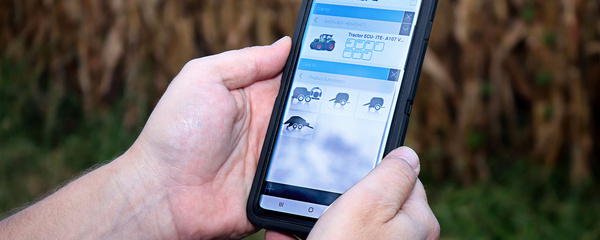
AEF Introduces ISOBUS Database App for Mobile Convenience
Ag equipment dealers, manufacturers, farmers to easily view ISOBUS compatible products across brands

AEF Steering Committee Meeting
On the 22nd and 23rd of September the AEF Steering Committee held a face to face meeting in the centre of Frankfurt. Apart from the regular monthly…

AEF General Assembly 2021
The 2021 AEF General Assembly took place in the afternoon of the 23rd of September and, just like the 2020 edition, was another virtual event, the…

AEF Virtual Plugfest
Due to the Covid-19 pandemic, no physical AEF Plugfest events could take place. This encouraged the AEF, in cooperation with Vector Informatik, to…

AEF offering reduced membership fee to new members
Most people have become tired of all the bad news we hear every day. It has been a difficult time for everyone. The leadership at AEF thought it would…

Data Management Update - New ideas for Standards for Transport operations
The AEF Data Management team is looking into additional use cases for transport operations. But some important elements are still missing. The…

TC-GEO Conformance Test FMIS
In 2017 the AEF released the TC-BAS Conformance Test for FMIS. With the upcoming release 2021R2, planned for the 1st of November, the AEF Conformance…

AEF at the EIMA 2021 show
The next EIMA, an International Agricultural and Gardening Machinery Exhibition takes place from October 19 thru 23, 2021 in Bologna, Italy.

AEF ends working relationship with CertTech
After 11 years of a long and effective collaboration, it was decided to end the relationship as of September 30, 2021. This collaboration had a long…

Team Lead position changed
Communication & Marketing – Thank you Andrew Olliver and welcome Alfred Kornes and Klaus-Herbert Rolf

AEF Fall Plugfest 2021 canceled – Virtual Plugfest planned!
Due to on-going concern over the spread of coronavirus (COVID-19) and related travel restrictions, the AEF decided to cancel the 2021 Fall Plugfest…

Change in John Deere Steering Committee member
Jürgen Hollstein will retire end of July this year and will be succeeded by Stefan Stahlmecke as new representative from John Deere.

Team Lead Positions Changed - Thank you Peter Münch and welcome Johannes Lange and Christian Jungkind
Peter Münch has left his AEF team leader position in June this year. Since the beginning of the AEF, he has been in charge of the functional safety…

Team Lead Positions Changed - New Deputy for Data Management: Jason Roesbeke
AEF is very pleased to introduce Jason Roesbeke from CNH Industrial, based in Bruges, Belgium as another Deputy Team Lead for the Expert Team Data…

AEF ISOBUS Database – Even More Improvements!
Following on from last summer’s updates and thanks to the continual feedback from the AEF Service Council, the Database Service team have been hard at…

Data Management Update
FMIS Conformance Test
As with all conformance tests and certified compatibility our goal in the end is satisfied customers.
In today's agricultural…

Wireless-Infield-Communication field test
In April 2021, the AEF organized a proof of concept to demonstrate the latest developments in Wireless-Infield-Communication together with the…

Support for AEF Security Team needed
The AEF Security Team is looking for expertise from AEF companies in the following areas:

New AEF member: MC Elettronica S.r.l.
MC Elettronica is a company specializing in design of sensors and “high tech” electronic components for agricultural machines, dedicated to PRECISION…

New AEF member: Agricon GmbH
Agricon is a full-service provider for precision farming solutions. It offers a wide range of products dedicated to improve crop production from the…

New AEF Member: Neways Electronics International N.V.
Neways Electronics International N.V. is active in the international EMS (Electronic Manufacturing Services) market. As System Innovator and life…

New AEF Member: ImageLine
Image Line is an Italian company – included in Italian official registry for innovative SMEs – that develops softwares, web portals and databases for…

New AEF Member: ifm group of companies
When it comes to pioneering automation and digitization technology, the ifm group of companies is your ideal partner. Since its foundation in 1969 ifm…

Thank you Mark Benishek
AEF secretary Mark Benishek retired end of last year and was succeeded by Anita Sennett representing the Association of Equipment Manufacturers (AEM)…

AEF changed organisation structure with the start of 2021
As announced during the virtual AEF General Assembly in October 2020 by Peter Hieronymus, a dedicated team of seasoned AEF members was tasked with…
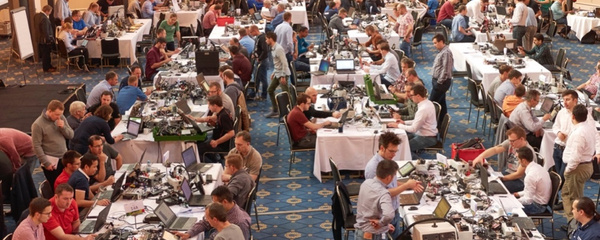
Plugfest 2021 planning underway, Stuttgart, Germany
AEF announces plans are underway for the next Plugfest in Stuttgart, Germany. The dates are set for September 20 to 24, 2021. We are excited at the…

FederUnacoma Round Table: ISOBUS Interoperability
FederUnacoma, the Italian Association of Ag. Machine Manufacturers, has always taken an active role in supporting the AEF through the years. Although…

High Speed ISOBUS (HSI) Demonstration at AGRITECHNICA 2021 – Support Needed!
Exactly 20 years ago at Agritechnica 2001 the first ISOBUS systems were demonstrated with the Universal Terminal application (even though the first…

AEF and ISOBUS articles created for N.A. digital forum
During 2020 the AEF Communications and Marketing North American Sub Group worked on a group of sponsored articles that ran on the Precision Farming…

ISOBUS Conformance Testing for Resale Value and Compatibility
With so many different manufacturers creating a wide scope of agricultural products available on the market today, this is a fairly common problem for…

An Essential Resource: the AEF ISOBUS Database
Whether you are a salesperson or service tech, the ISOBUS Database will become an essential part of your toolbox. It provides important ISOBUS…

Eight of the Most Compatible ISOBUS Functionalities for Precision Farming
In a market offering so many different tractors and implements, how can you make the right choice? Now more than ever, when considering the precision…

Plugfests, ISOBUS and Project Teams: the AEF Tackles Tough Ag Industry Issues
Every day, farm tractors and implements are connected together and the electrical connectors are engaged.

Plugfest: An Event for Friends and Competitors
How do you get a group of ag software engineers excited? Most engineers have similar traits. They want to provide new and better designs, and the best…

Introducing TIM — a Farmer’s New Best Friend
Tractor Implement Management, or what we call “TIM,” is a cross-product and cross-manufacturer ISOBUS solution where the implement controls certain…

The Three Things You Need to Know About M2M
M2M, also known as “Machine-to-Machine Communication,” is exactly what it sounds like. It stands for two machines “communicating” together.

New Security Team Lead: Bradley Nielsen
AEF is very happy to present the new Security Team Lead: Bradley Nielsen from CNH Industrial, based in Burr Ridge, Illinois, agreed to take over the…

New Deputy for Wireless Infield Communication team: Tobias Nothdurft
AEF is happy to present the new WIC Deputy Team Lead: Tobias Nothdurft from AGCO, based in Marktoberdorf, Germany, agreed to take over the tasks from…

New AEF Member: Materna
Materna is a full service provider in the premium segment successfully implementing IT projects for the industry sector, business customers and the…

New AEF Member: Junkkari Oy
Junkkari Oy is a family owned company located in Finland, established over 60 years ago and is part of the MSK Group Oy.

AEF and AgGateway align to deliver digital solutions for Agriculture
AgGateway and the Agricultural Industry Electronics Foundation (AEF) have signed a Memorandum of Understanding to collaborate on initiatives to…

AEF General Assembly
The first ever virtual AEF General Assembly took place on Thursday the 15th of October. The AEF Chairperson, Peter van der Vlugt opened the meeting…

Thank you Marcello Mongiardo
As mentioned above, during this year’s Chair Group (CG) election meeting resulted in a change of the Vice-Chairperson. Marcello Mongiardo as the…

Core Membership changes and additions
Core Membership changes
At the last AEF General Assembly held October 15, 2020, leadership addressed a change request to the Core membership. The…

AEF Tech Talks
In 2020 the AEF started scheduling a new educational series called Tech Talks on a monthly basis. AEF Tech Talks are short condensed introductions to…

EIMA Digital preview
On November the 11th and 12th the AEF had the honour of presenting two sessions during the EIMA Digital Preview (EDP). The EDP was a purely online…

Service Council review
On 28th of October 2020 the third AEF Service Council took place in Warendorf, Germany. The event – aimed at dealer service and sales staff as well as…

Project Universal Terminal (UT 3) ramps up in 2020
Project activities for the UT 3 ISOBUS functionality conformance test have received much interest for the past few years. In January 2020 a face to…

Open position for Security Team Leader
A new lead is sought for the AEF Security Expert Team. This is a diverse team made up of security professionals from both OEMs and security…

AEF ISOBUS Database – Improvements
The latest version of the AEF ISOBUS Database was released in the middle of summer and included the highly anticipated changes to the Product Upload…

ATLAS - High Level Architecture
Τhe overall goal of the Horizon 2020 project “ATLAS” is the development of an open digital Network through which information and services become…

Attention all users of the AEF ISOBUS Conformance Test!
The current AEF Conformance Test environment was developed based on a now outdated version of National Instruments TestStand. (To be precise we are…

WIC presentation at ASABE Annual International Meeting (AIM)
Once again, the AEF were presenting at the 2020 ASABE Annual International Meeting (AIM). The event took place from the 13th to the 15th of July and,…

AEF at AGROSALON
The AGROSALON took place from the 6th to the 9th of October in Moscow and thanks to the grateful assistance of the Agriculture Engineering team at…

AEF to present at EIMA Digital Preview
The Covid-19 emergency has defined a new economic and social geography with global restrictions. The international trade shows worldwide have been…

ATLAS - What are the use cases?
Smart agricultural machines, sensors and data processing services have assisted farmers by providing an abundance of information that help optimize…

Self-Certification provides next phase of conformance testing
As highlighted in the AEF ISOBUS Database Improvements Press Release issued before Agritechnica last year, Self-Certification is here! But what…

Introduction to the new team - PT13 Security
Last year in October a new AEF team was formed, composed of security experts from several AEF member companies. Norbert Schlingmann, General Manager…

Update on High Speed ISOBUS
Following on from the very successful High Speed ISOBUS presentation given at the Landtechnik conference in November last year, this edition of the…

AEF Plugfests in 2020
After our disappointment at having to cancel the AEF Spring Plugfest in Lincoln due to on-going concern over the spread of coronavirus (COVID-19) and…

New guideline for Extended Farm Management Information Systems Data Interface (EFDI) available
This EFDI guideline provides an extensible communication system concept and defines rules for adding new functionalities to cover specific use cases…

Machine and Sensor Manufacturers: Technical Requirements Surveys for Data-Driven Agriculture
The European Commission is funding the development of an open digital platform for interoperability between agricultural machinery, sensors and data…

First TIM products are present in the AEF ISOBUS Database
Since AEF’s development of the Tractor Implement Management (TIM) was launched in December 2019, the first products supporting the TIM functionality…

AEF TIM Award ceremony
Tractor Implement Management (TIM) receives two awards in February: ASABE AE50 Award and AEM Davidson Prize in the US.

AEF Core Membership changes
As well as the recently announced AEF membership changes involving Kubota Corporation and Kverneland Group, the start of 2020 has ushered in one more…

agROBO food - AEF with CEMA participation
In parallel to ATLAS, AEF is a partner in a second EU funded project named agROBOfood.

ISOBUS Seminar at REI
The ISOBUS event held in Reggio Emilia (Italy) on December 13th 2019 titled “Agriculture looks to the future” was a great success.

AEF, AETC and ISOBUS; A Great Combination
Last month on February 10-12 the AEF was a sponsor of the Agricultural Equipment Technology Conference (AETC) 2020. This annual event is hosted every…

New PT05 Lead Jasper Jeninga
As of December 1, 2019, the AEF has a new project team leader for the ISOBUS Automation Group: Jasper Jeninga, Team Leader at CLAAS based in Bad…

New PT04 Deputy Ronny Preußer
The AEF is happy to introduce Ronny Preußer as new deputy team lead for project team Service & Diagnostics.

Hara Spathi started as Project Manager for ATLAS
Since February, 12, 2020 Hara Spathi has joined the AEF as project manager for the ATLAS program. ATLAS focuses on the standardization of data…

AEF received ASABE AE50 award for Tractor-Implement-Management
Mark Benishek AEF Secretary, General Manager Norbert Schlingmann and Chairman Peter van der Vlugt received the AE50 award during the ASABE…

Kubota Corporation to take over AEF core membership from Kverneland Group
After 11 years of Kverneland Group’s direct engagement as AEF founding - and core member, the mother company Kubota Corporation has taken over the AEF…

Engineering First TIM products certified
After the successful release and roll out of the AEF TIM conformance test some days ago to certification test laboratories, we are happy to announce…

AEF Booth at Agritechnica
Agritechnica 2019 took place from the 10th to the 16th of November at the Hannover Messe and once again the AEF was present with a booth in Hall 15.…

AEF Speeches at VDI conference 2019
The AEF was well represented with three different presentations at the 77th Landtechnik AgEng Conference which took place on Friday the 8th and…

AE50 award for TIM
The AEF is pleased to be a recipient of an AE50 award of the American Society of Agricultural and Biological Engineers (ASABE) for 2020 for the…

ATLAS focuses on the standardization of interfaces in knowledge-based farming
In the "Agricultural Interoperability and Analysis System (ATLAS)" project leading manufacturers of agricultural technology are working together with…

Further development of the AEF ISOBUS Database
Which implement can be operated with the tractor’s ISOBUS terminal? Which functionalities are supported by the combination of vehicles? Can the farmer…

AEF at ACPA
From the 14th to the 17th of October the Asian-Australasian Conference on Precision Agriculture took place at the Punjab Agricultural University in…

Russian Federation is interested in ISOBUS technology
Last October 2019, Norbert Schlingmann, AEF General Manager, was invited to speak at a conference in Moscow entitled “Universal control and monitoring…

TPPL – Twisted Pair Physical Layer
In January 2019, the 3rd revision of ISO 11783 – Part 2: Physical Layer has been published. As you may know this part of the ISO standard details the…

The guiding hand behind TIM - Hans Jürgen Nissen
As with all projects, at some point they come to completion. This is true with the project, Tractor Implement Management (TIM), which was released…

New record for AEF Plugfest
From the 17th to the 19th of September the AEF European Plugfest took place in Antibes, France at the very new Juan-les-Pins Conference Centre. With…
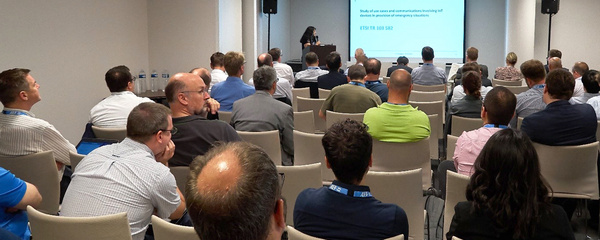
AEF Conference Day: Partnering with others in Digital Landscape
In addition to the Plugfest event, project team meetings and the AEF General Assembly, the AEF Conference event took place in the afternoon of…

Opportunity in Digital Farming – Lead for EU subsidized project team
The AEF is looking for a project team lead to help with an EU subsidized design project. The benefits of digital farming are increasing day by day and…

AEF at InfoAg 2019
Once again the AEF was present at Union Station in St Louis, Missouri participating in the 2019 edition of InfoAg. As with previous years the AEF…

AEF Conformance Test Pricing Increase
Starting in January 2020 the annual fee that manufacturers pay to access the AEF ISOBUS Conformance Test will increase to 24.300 Euro for the…

TIM – future-proof communication between tractor and implement
TIM (Tractor Implement Management) is a cross-product and cross-manufacturer ISOBUS solution where the implement controls certain tractor functions…

AEF Steering Committee and Team Leaders meet at SDF
During the last week of June, in one of the hottest weeks of the summer, the Steering Committee, Team Leaders and associated deputies converged on…

Second AEF Service Council in October
The first AEF Service Council took place in Warendorf at the end of December 2018. Due to the positive outcome, the participants expressed the wish to…

New AEF Member: Proemion GmbH
We are a technology company that builds connectivity solutions for machines. We provide the infrastructure to connect mobile machines with the cloud…

New AEF Member: Parker Hannifin Mfg Finland Oy
Parker Hannifin is a Fortune 250 global leader in motion and control technologies. For more than 100 years the company has engineered the success of…

AEF Events at the Plugfest
In conjunction with the Plugfest, you will have the option of seeing the Plugfest activities in action or particpate in a number of conference &…

VDI workshop on ISOBUS and TIM
Under the title „ISOBUS Automation using TIM“ an international VDI workshop took place in the Berlin Mercure Hotel MOA on 28 June 2019. The AEF was…

AEF activity at the ASABE Annual International Meeting
AEF Sponsored and exhibited at the 2019 Annual International Meetings of the ASABE in Boston, Massachusetts, USA on July 7 – 10, 2019. The focus of…

Thanks to Martijn Holten
Martijn Holten left Kverneland Mechatronics and in addition the position as deputy for AEF PT4 Service & Diagnostics in June. Since the beginning he…

Thanks to Harald Dietel
Since the launch meeting in Frankfurt am Main on 16 March 2011, Harald Dietel has significantly supported the project team High Voltage (PT7) as team…

Mark von Bibra: new project manager at the AEF
Since 24 June 2019, Mark von Bibra has joined AEF as project manager. The Australian studied in Melbourne and Singapore and worked for the last six…

Website and AEF web-based training in French
To coincide with the AEF Fall Plugfest in France in September, the AEF website and the three modules of the AEF web-based training will be available…

Become a sponsor for AEF Fall Plugfest now
The AEF Fall Plugfest 2019 will take place from 16 to 20 September in Antibes, France. Be there when a knowledgeable audience meets to test and…

Register now for the AEF Fall Plugfest
The preparations for the next AEF Plugfest which will take place from 17 to 20 September in Antibes (France) are already in full swing.

New project team: Medium Voltage
On 26 September 2018, experts from several AEF member companies met to launch the new Medium Voltage (PT12) project team. After defining the project…

Dealer registration and AEF ticket system
The dealer registration is also new. In future, dealers will be able to register and log into the AEF ISOBUS database themselves. This enables them to…

AEF Compatibility Check
The AEF ISOBUS database allows users to learn about ISOBUS functionalities supported by both the single product and several selected products.

Further development of the AEF ISOBUS database
From September 2019, manufacturers will be able themselves to carry out a Conformance Test by taking into account defined AEF Rules in order to ensure…

New AEF Member: Panasonic Industry Europe
Panasonic Industry Europe GmbH is part of the global Panasonic Group and provides industrial products and services in Europe.

Special training modules for AEF members
What is ISOBUS? How does the AEF ISOBUS Database work? What are the advantages of the AEF ISOBUS CheckTool? These and other questions are answered by…

New Twisted Pair Connection for ISOBUS
The AEF Engineering & Implementation team has been investigating the use of Twisted Pair Physical Layer (TPPL) for use on ISOBUS systems.

OEM information Sub Suppliers Certification
Suppliers often provide their ECUs to multiple manufacturers. These ECUs are equipped with a standard software which are able to support different…

New AEF Member: Orion Tecnologia e Sistemas Agrícolas Ltda
Orion Tecnologia e Sistemas Agrícolas Ltda is an innovative Brazilian company that designs and manufactures special spraying implements for installing…

New AEF Member: J.ASSY Agricultural
J.Assy Agricultural specializes in technology solutions for agribusiness. They are one of Brazil’s largest investors in R & D in this industry.

Review: SIMA 2019 in Paris
From February 24th thru the 28th the 78th edition of SIMA took place at the Parc des Expositions in Paris Nord Villepinte. This year there were…

Review: AXEMA Technical conference
On Saturday February 23rd the third AXEMA Technical conference took place at the Parc des Expositions. The surrounding exhibition halls were busy with…

Review: AEF at AETC
The AEF presented at the “Agricultural Equipment Technology Conference” (AETC) from February 11 to 13, 2019 in Louisville, Kentucky, with a program…

Become a sponsor for AEF Spring Plugfest now
The preparations for the AEF Plugfest in spring, which will take place from 7 to 9 May in Lincoln, Nebraska, USA, are already in full swing.

Review: AEF Service Council in Warendorf
On 19th of December 2018 the first AEF Service Council took place in Warendorf. The event – aimed at service staff and product management of…

In the video: Carsten Hühne about the AEF Ticket System
What does the AEF Ticket System do? How does it work? What role does it play in the context of diagnostic options in the AEF ISOBUS Database, keyword…

Announcement: AEF at the SIMA 2019
SIMA 2019 will take place at the Paris Nord Villepinte Exhibition Centre from the 24th to the 28th of February. This will be the 78th edition of the…

TIM: Benefits and aims
TIM (tractor implement management system or device steers tractor) is an ISOBUS-based solution for a barrier-free and cross-vendor data exchange in…

Service Council on the subject of the AEF ticket system and database diagnostic use
The AEF ticket system is an essential component of the AEF ISOBUS database. With this ticket system, information about compatibility problems between…

New AEF Member: HELUKABEL
Established in Germany in 1978, HELUKABEL® is one of the world’s leading cable manufacturers and suppliers. In addition to our production sites in…

New AEF ISOBUS Database login page
The AEF is very excited to annouce the release of the new AEF ISOBUS Database login page.

New AEF Member: Dacom
Dacom provides growers and the agribusiness sector with data-driven advisory services throughout the world. Using intelligent analyses, all available…

Review: EIMA in Italy
From the 7th to the 11th of November the EIMA International show took place in Bologna, Italy. More than 315,000 visitors attended this year, coming…

AEF General Manager presentation at AgGateway annual meeting
AEF General Manager, Norbert Schlingmann, was a keynote speaker at the AgGateway Annual meeting in Austin Texas, USA on Nov 13th. His presentation…

Road safety pilot for agricultural equipment successful tested
AEF developed together with ETSI’s committee on Machine-to-Machine Communications a pilot to distribute a warning message to passing vehicles within a…

Thank you Jaap van Bergeijk
Jaap van Bergeijk will leave his AEF team leader position to the end of the year. Since the beginning of the AEF, he has been in charge of the…

New Project Team Medium Voltage
On 26th of September the first meeting took place for the latest AEF Project Team, PT12 Medium Voltage. It has been formed based on a project proposal…

Review: TIM Plugfest in Bologna
The eighth TIM Plugfest took place at the Savoia Regency Hotel in Bologna on the 19th and 20th of September. It was the first time that a TIM specific…

Review: AEF celebrated its 10 Year Anniversary
On September 19th the AEF celebrated its 10 Year Anniversary with a full day of events in Bologna, Italy. This was in addition to the AEF Fall…

Review: AEF Fall Plugfest in Bologna
From the 18th to the 20th of September the Fall Plugfest took place at the Savoia Regency Hotel in Bologna, Italy.

AEF Plugfest to include the next edition of the TIM Plugfest and 10th Anniversary Celebration
The 8th TIM plugfest will be held on 19th and 20th of September during the European edition of the AEF Plugfest, at the Savoia Hotel Regency, Bologna,…

AEF joined AgGateway membership
Both organisations are interested in develop better products to the farmer. In order to provide functionalities on equipment we need to have a better…

New AEF Member: Multiva
Multiva is a brand for high quality agricultural machines, produced by Dometal Oy. Company is located in Loimaa, Finland. Our product range consists…

New AEF Member: Geoprospectors
Geoprospectors is a leading supplier of soil sensors for precision agriculture, subsurface engineering and airborne exploration.The solutions use a…
New AEF ISOBUS Functionality ISB
The functionality ISB, or ISOBUS Shortcut button refers to a physical button (or key or switch) in the tractor cab which, when pressed, will…

Review: Spring plugfest in Lincoln, Nebraska
From May the 15th to the 17th the Spring Plugfest took place in Lincoln, Nebraska. The Embassy Suites together with the NTTL test lab hosted another…

2008 to 2018: AEF celebrates 10th anniversary
On 28 October 2008 seven international manufacturers of agricultural machinery and two associations founded the Agricultural Industry Electronics…

Register now: Plugfest in Lincoln
From 14 to 18 May 2018 the Plugfest will take place in Lincoln Nebraska. Registration is now possible.

Review: Commodity Classic
The Commodity Classic Ag show in North America was located this year in Anaheim, California from 27th February - 1st March.

AEF will join the AEM booth during the Commodity Classic show, February 27 – March 1 in Anaheim, California USA
Commodity Classic is America's top agricultural convention and trade show, managed by farmers, for farmers. The trade show connects cutting-edge…

AEF at Agritechnica in Mid-November
Again the AEF will be present at Agritechnica in Hannover, Germany running from November 12th through 18th.



